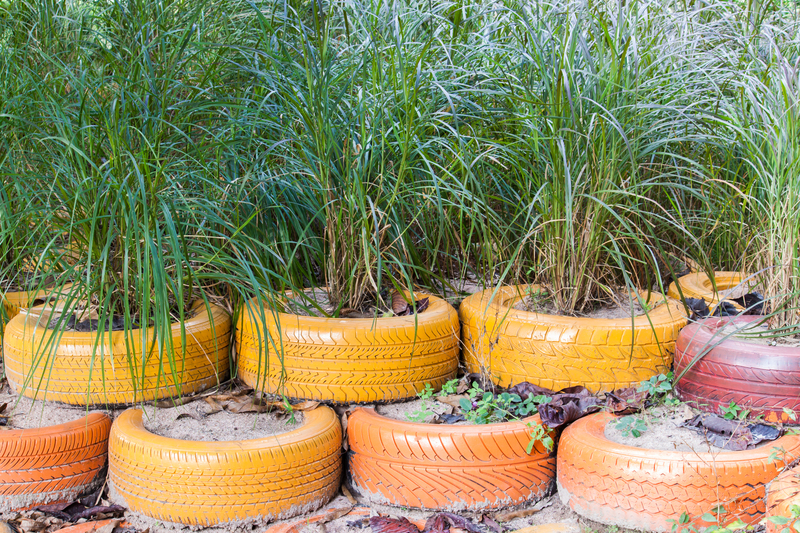How to Safely Dispose of Construction Materials
Posted on 16/12/2024
The disposal of construction materials is a critical aspect of project management that often goes overlooked. Improper disposal can have significant environmental impacts, not to mention legal repercussions for violating waste management regulations. Construction sites generate an enormous amount of waste, including hazardous materials, recyclable resources, and general debris. Understanding how to safely dispose of these materials is not just a regulatory requirement but also an ethical obligation.
Types of Construction Waste
Before diving into disposal methods, it's essential to identify the different types of construction waste:
- Hazardous Waste: Includes asbestos, lead-based paints, and other toxic materials.
- Recyclable Materials: Metals, wood, concrete, and certain plastics.
- General Debris: Non-toxic, non-recyclable materials like dirt, broken tiles, and drywall.
- Organic Waste: Trees, branches, and other green waste from land clearing activities.

Methods for Safe Disposal
1. Hiring a Professional Waste Management Service
One of the most efficient ways to manage construction waste is to hire a professional waste management service. These companies specialize in the collection, segregation, and disposal of construction materials. They are equipped to handle hazardous waste and have the necessary permits and facilities to ensure safe disposal.
2. Recycling and Reusing
A significant portion of construction waste can be recycled or reused, reducing the environmental footprint of your project. Metal, concrete, and wood can be processed and used in new construction projects. Many companies offer recycling programs specifically for construction materials, and some jurisdictions mandate recycling as part of their waste management regulations.
3. On-site Waste Segregation
Implementing on-site waste segregation can make the disposal process more manageable. By sorting waste into categories--recyclable, hazardous, and general debris--right at the construction site, you can streamline the disposal process. This method makes it easier to comply with local regulations and facilitates recycling efforts.
4. Utilizing a Construction Dumpster
Renting a construction dumpster can be a practical solution for managing waste. These dumpsters are designed to handle large, bulky materials and come in various sizes to suit different project needs. Ensure that the dumpster rental company follows proper disposal methods and complies with local regulations.
5. Disposal Facilities
Many communities have designated disposal facilities that accept construction waste. These facilities are equipped to handle various types of waste and ensure that hazardous materials are safely processed. Check with your local government for information on disposal facilities and any restrictions they may have.
6. Donations
Sometimes, materials that are no longer needed but still in good condition can be donated. Many non-profit organizations accept donations of construction materials such as lumber, doors, windows, and fixtures. This not only helps in reducing waste but also supports the community.
Regulations and Compliance
Understanding and complying with local, state, and federal regulations is crucial for the safe disposal of construction materials. Governments have strict guidelines to ensure that hazardous waste is correctly managed and that recyclables are recovered effectively. Non-compliance can lead to hefty fines and legal action.
Environmental Protection Agency (EPA) Guidelines
In the United States, the EPA has established guidelines for the proper disposal of construction waste. The Resource Conservation and Recovery Act (RCRA) governs the management of hazardous and non-hazardous waste, and the Clean Air Act and Clean Water Act also include provisions relevant to construction waste disposal.
OSHA Regulations
The Occupational Safety and Health Administration (OSHA) has regulations concerning the handling and disposal of hazardous materials on construction sites. These regulations aim to protect workers from the risks associated with exposure to hazardous substances.

Best Practices for Safe Disposal
1. Training and Education
Educating your workforce on the importance of proper waste management is essential. Regular training sessions can help workers understand the different types of waste and the appropriate disposal methods for each.
2. Detailed Waste Management Plans
Creating a comprehensive waste management plan before starting a project can go a long way in ensuring safe disposal. This plan should outline how different types of waste will be managed, who is responsible for waste segregation, and the disposal methods to be used.
3. Use of Appropriate PPE
When handling waste, especially hazardous materials, it's crucial to use the appropriate personal protective equipment (PPE). Gloves, masks, and protective clothing can significantly reduce the risk of exposure to harmful substances.
4. Regular Audits
Conducting regular audits of your waste management practices can help identify areas for improvement and ensure compliance with regulations. These audits can also help track your progress in reducing waste and increasing recycling efforts.
5. Community Engagement
Engaging with the local community can provide valuable insights into how to manage waste better. Community members can sometimes offer innovative solutions for recycling and disposal, and engaging them can foster goodwill.
Conclusion
Properly disposing of construction materials is an intricate but necessary task that serves both environmental and legal responsibilities. From understanding the different types of waste to implementing effective disposal methods and complying with regulations, there is a lot to consider. By adopting best practices and staying informed about local regulations, you can ensure that your construction projects contribute to a more sustainable future.






